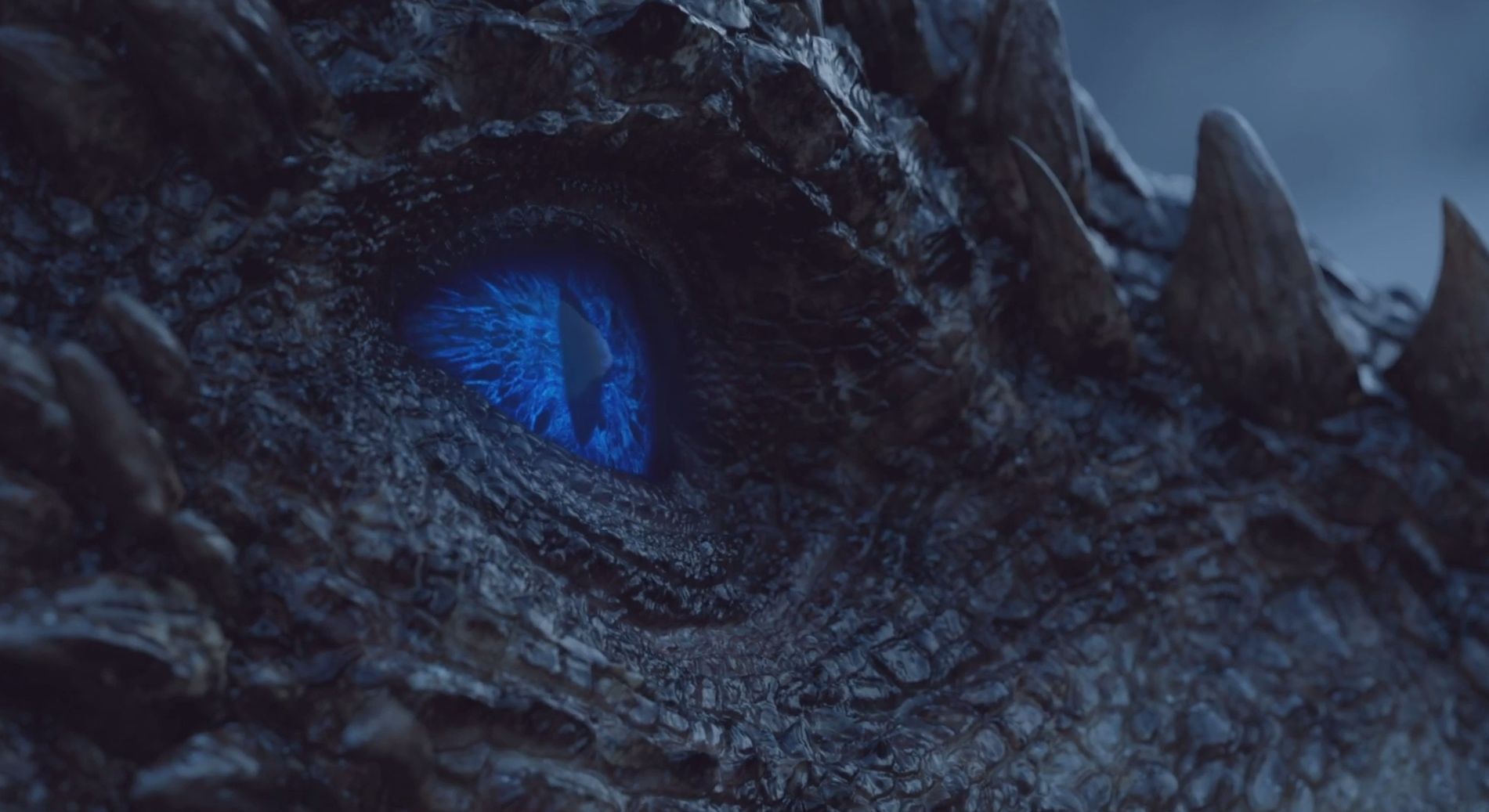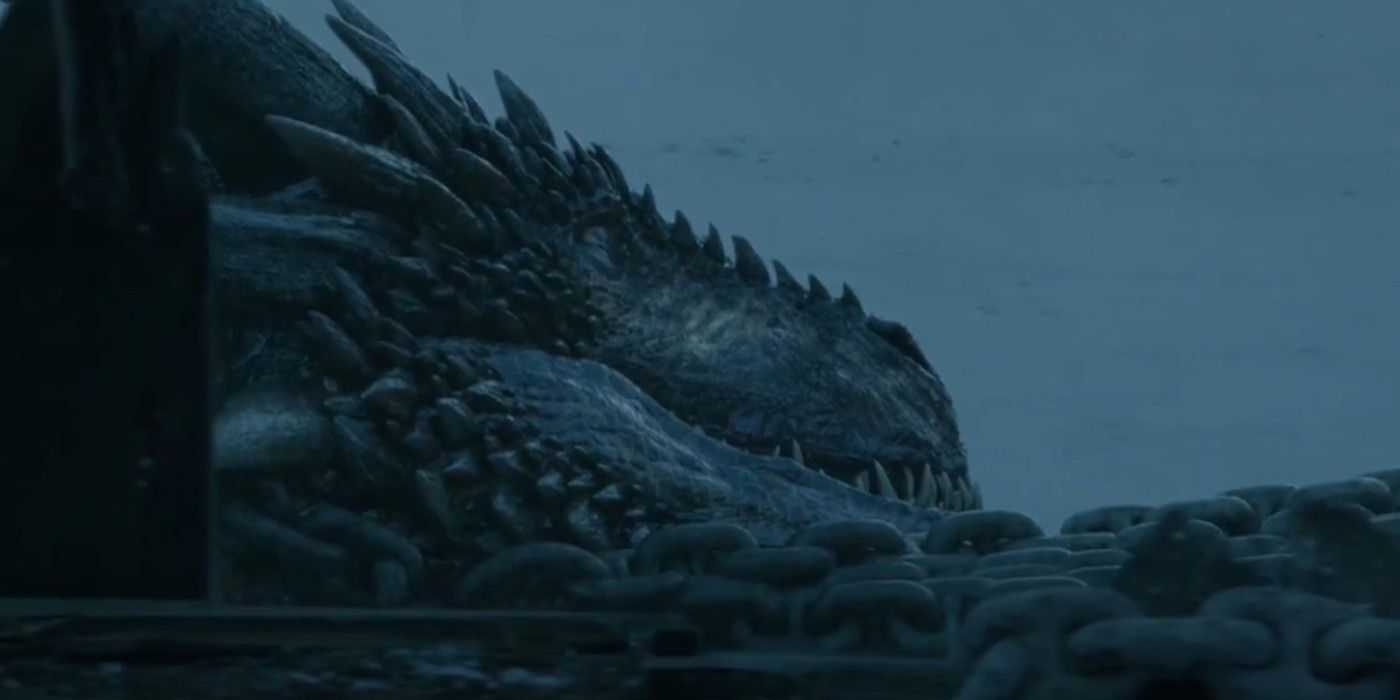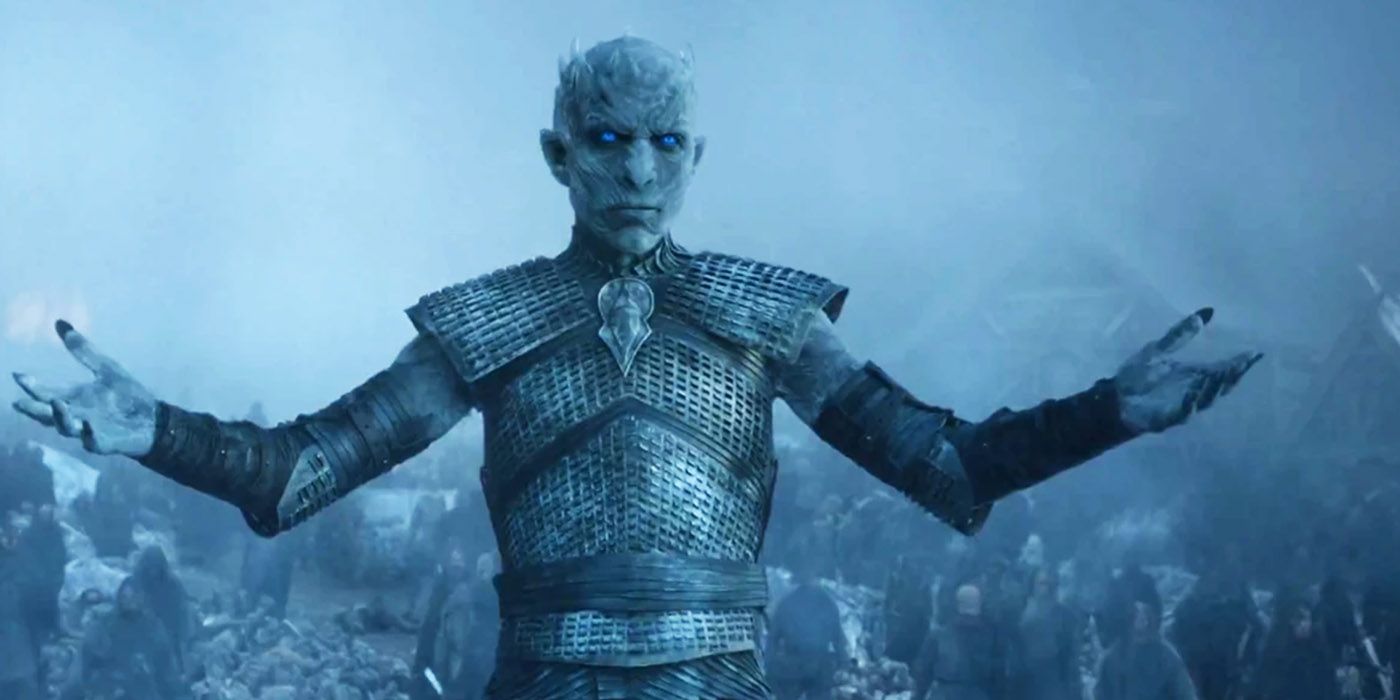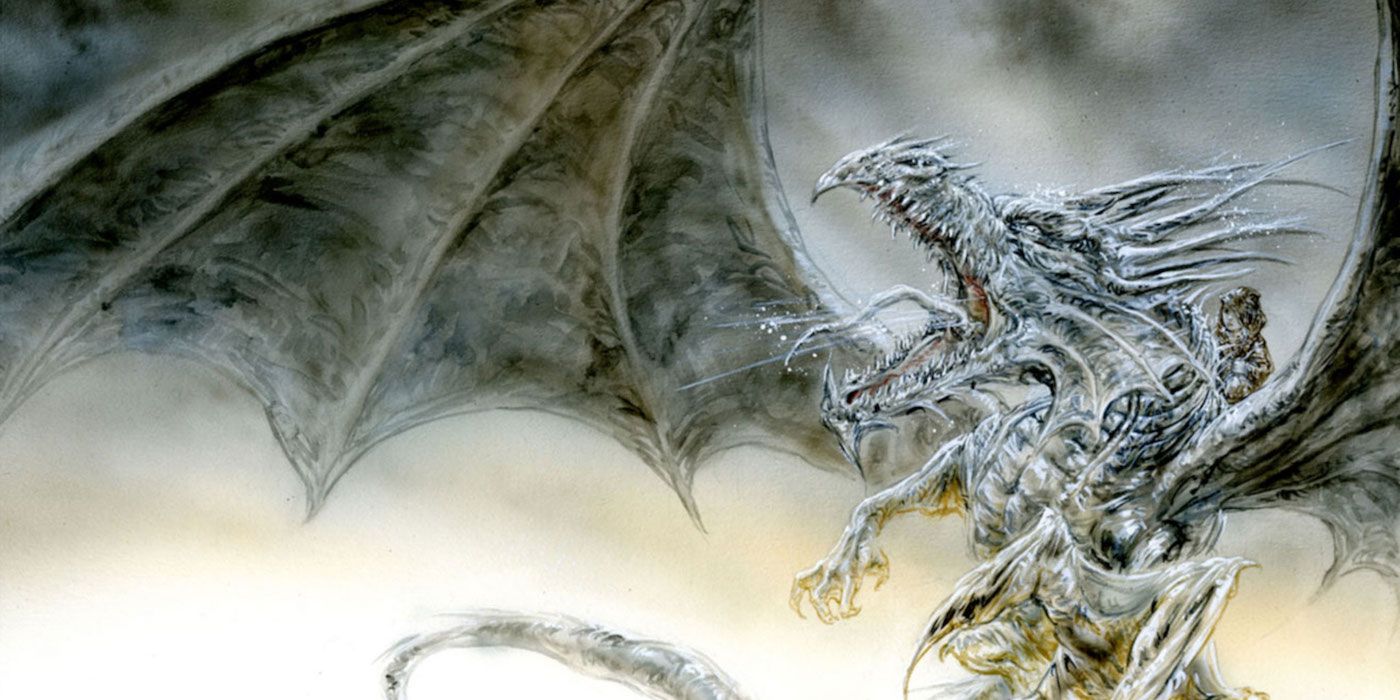Warning: the following contains spoilers for Game of Thrones season 7 episode 6: 'Beyond the Wall'
-
For years, fans and theorists alike have wondered how and when an ice dragon would arrive in Westeros. Like the White Walkers themselves, the blue-eyed beasts were the stuff of legend. They were rumored to fly amidst the frozen lakes in The Land of Always Winter. Some thought an ice dragon was housed deep inside The Wall, and others even wondered if one might materialize out of the frozen pond near the godswood at Winterfell.
Not so. As revealed in the penultimate episode of the season, the ice dragon was right in front of us the whole time. In œBeyond The Wall, Game of Thrones delivered an ice dragon by way of House Targaryen.
It all started in a moment of absolute heroism when Daenerys flew her fleet of fire-breathing beasts to the aide of Jon Snow and his motley crew. While staving off the horde of wights that would have surely decimated the King of the North and his men, Dany's dragons seemed destined to save the day. Then, out of nowhere, the Night King hurled a crystallized ice-spear like an Olympic javelin thrower and eviscerated Viserion's body. Like a leaking oil tanker, Dany's dragon spilled blood and fiery guts from above, plummeted from the skies onto the frozen pond, and slipped into the watery abyss.
Viserion didn't remain out of the action for long. After Jon Snow narrowly escaped death thanks to Benjen Stark, the leader of the White Walkers ordered his army of wights to lift the deceased dragon out of the icy water. Armed with massive, noggin-sized chains, the reanimated legion hoisted Viserion out of his aquatic grave and left him before his new master. Rather than what we saw him do at Hardhome, the Night King simply approached the beast, knelt down before it, and resurrected the dead dragon by simply touching his snout. Viserion was reborn, now with the signature blue eyes of his white-walking brethren.
The ice dragon (or wight dragon) is here. With the Night King as his (likely) rider, œthe dragon has three heads theory will be completed in utterly perverse and unpredictable style. Furthermore, it's equally poetic that the dragon destined to fight Daenerys in the coming season is the one named after her sadistic and weak brother, Viserys. While Viserion got short shrift throughout the show, it makes the most sense that he's the first dragon to go. Drogon, the biggest of the three, takes his name from Dany's late husband, Drogo, and is seemingly off limits from premature death. Rhaegal is named after Rhaegar Targaryen, the true father of Jon Snow. You can expect the King of the North to ride him at some point in the final season.
All that being said, it's still a tremendous loss for the Mother of Dragons and her constituents for the war to come. While we have yet to see him in action, expect Viserion 2.0 to be far more powerful in death than he ever was in life.
Powers & Origins
If Jaime and Jon were humbled before Dany's dragons, their hair will gray before the ice dragon. While most of Westeros believed the Valyrian dragons were extinct following the Targaryen civil war, very few individuals in both A Song of Ice and Fire and Game of Thrones ever dared mention ice dragons. Even in this mystical world of warging, greenseeing and The Lord of Light, ice dragons were a bridge too far. They were such fringe material that even Jon Snow, early-adopter of the White Walkers threat, laughed at Old Nan's bedtime tales about the ice dragons' existence. As a result, the Seven Kingdoms are all grossly unprepared for what's coming their way. How do you fight something you don't even know exists?
Ice dragons are believed to have entirely magical properties. They're not just animals; they're mystical creatures. So enigmatic are the ice dragons that many ASoIaF fans believe an ice dragon was housed in The Wall, thus supplying the legendary barrier with its enchanted abilities to ward off White Walkers. While that may still prove true in George R. R. Martin's The Winds of Winter, it's more likely that undead Viserion will be used to bring down The Wall in Game of Thrones, then ride beyond it to decimate the Seven Kingdoms.
While no one in Game of Thrones has commented on the actual powers and capabilities of ice dragons, Maester Margate gave some insight in The World of Ice & Fire. As a longtime resident of The Citadel, Margate is quite confident in the existence and awe-inspiring power of Ice Dragons:
œOf all the queer and fabulous denizens of the Shivering Sea, however, the greatest are the ice dragons. These colossal beasts, many times larger than the dragons of Valyria, are said to be made of living ice, with eyes of pale blue crystal and vast translucent wings through which the moon and stars can be glimpsed as they wheel across the sky. Whereas common dragons (if any dragon can truly be said to be common) breathe flame, ice dragons supposedly breathe cold, a chill so terrible that it can freeze a man solid in half a heartbeat.
Now that Viserion is a blue-eyed beast, can we expect his flame to change colors? Given blue fire is traditionally associated with being hotter than its red or yellow counterparts, Viserion could actually test the longstanding belief that Dany and her dragons are invincible to flame.
On the other hand, Viserion's new life as a wight could totally alter his nature and turn his fire-breathing abilities into ice-forming breath that œcan freeze a man solid in half a heartbeat. Though the title of A Song of Ice and Fire seems perfectly encapsulated by Jon Snow and Daenerys Targaryen' looming romance, it may be literally applied to the battlefield when Drogon, Rhaegal and the Night King's new pal, Viserion, duke it out in the final season. In that hypothetical scenario, it's anyone's guess who comes away with the win.
While discussing natural-born Ice Dragons near the Shivering Sea, Maester Margate revealed a hint about how Ice Dragon's can die, noting that they œsupposedly melt when slain, so no actual proof of their existence has ever been found.
This could be a key piece of information for the wars to come. We know wights aren't killed by swords and arrows, but by fire alone. Seeing as Viserion 2.0 is essentially a dragon-wight, he may be equally vulnerable to the flames of Drogon and Rhaegal.
Then again, in George R. R. Martin's little-known novel, The Ice Dragon (published in 1980, long before Game of Thrones), the titular character easily defeats many of his fire-breathing foes while spreading winter across the land. Though The Ice Dragon was written for children, it contains the macabre descriptions we've come to expect from GRRM. Make no mistake, though he is the protagonist in the novel, the ice dragon is an absolute monster:
"And when the ice dragon opened its great mouth, and exhaled, it was not fire that came streaming out...the ice dragon breathed cold. Ice formed when it breathed. Warmth fled. Fires guttered and went out, shriven by the chill. Trees froze through to their slow secret souls, and their limbs turned brittle and cracked from their own weight. Animals turned blue and whimpered and died, their eyes bulging and their skin covered over with frost. The ice dragon breathed death into the world; death and quiet and cold."
Though Martin has played coy on the subject, some of his publishers have insisted that The Ice Dragon takes places in the same world as A Song of Ice and Fire. Indeed, there are multiple references in the novel to œthe land of always winter," and some theorists claim the book doubles as an origin story for White Walkers. By novel's end, the ice dragon disappears similarly to how Maester Margate describes and melts into a cool pond.
Whatever happens in the final season of Game of Thrones, you can bet ice dragon Viserion won't go down so easily.




